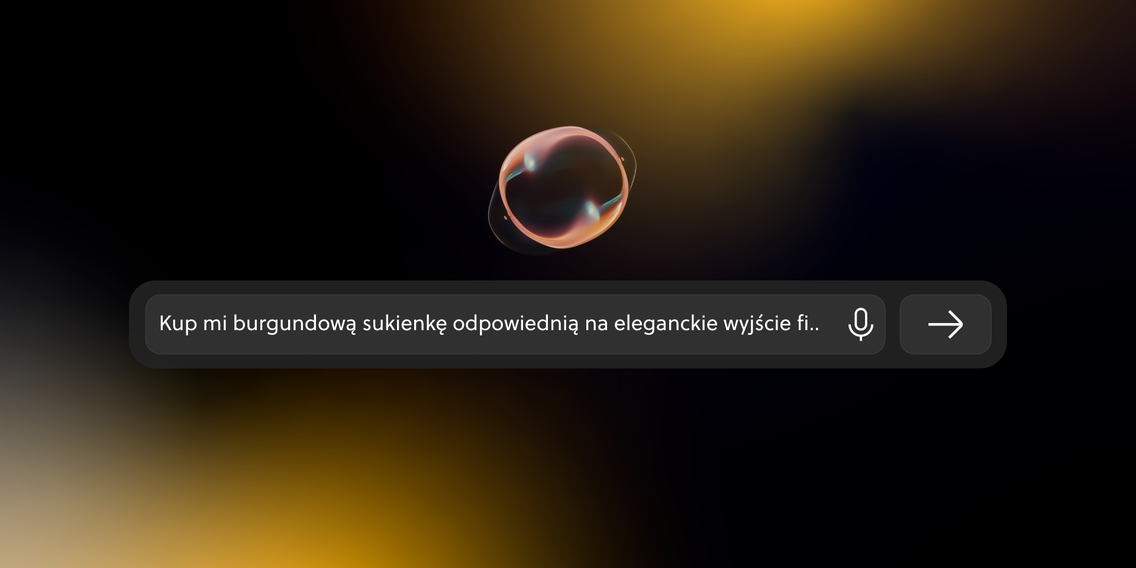6 min
October 17, 2025
Why Headless Commerce and Retail Go Hand in Hand?
What do headless commerce and retail have in common? If you are a retailer, you've probably heard the term "headless" used in relation to commerce. As its popularity grows, more companies wonder: what exactly does it mean? And if it is useful, how can it be leveraged?
The headless approach is worth exploring. It enables companies to stay current and gain an edge in the competitive e-commerce market.
In this article, we will discuss what the headless approach is, what its benefits and challenges are, and why it is the future of retail.
Listen to the audio version of this article.
What is headless commerce?
Headless commerce is a type of software architecture that relies on decoupling the frontend and backend layers into two independent entities. To understand this concept, let's take a step back and look at monoliths first.
A monolithic structure suggests that the backend and frontend are tightly coupled. Put simply, if you want to add an extra button to your website or adapt your store to a new platform (frontend changes only), you will also have to interfere with the backend.
In contrast to a monolith, a headless system has three core pillars:
Backend, aka the business logic layer
Frontend, aka the presentation layer
The API layer as the means of communication between the two.
In a headless architecture, all business functions can be handled by different technology vendors, rather than a single monolithic solution. This allows merchants to deliver solutions that anticipate market needs and significantly improve customer experiences.
How Do Headless Commerce and Retail Mutually Benefit Each Other?
The short answer is: a headless transformation helps retailers outpace the market and stay on top.
The modern retail market is evolving very quickly and is highly competitive. The ability to rapidly implement changes and adapt to new customer demands is crucial for every online store—otherwise, the consequences will be felt in revenue. The headless technological foundation enables this instantaneous adaptation.
The biggest problem with monoliths and traditional commerce is their bulkiness. Keeping the business tightly coupled to the backend means longer time to deploy changes, a greater risk of errors, less adaptive designs, and overall more troublesome performance.
What are the Benefits of Headless Commerce for Retailers?
With headless technology comes the ability to adapt. And many other benefits that retail businesses can leverage.
Better Performance and Scalability
If done well, migrating to headless results in higher website speed and a more fluid user experience. The use of Progressive Web App (PWA) technology and modern frameworks, such as JavaScript, offers more optimized mobile versions. This allows you to:
Rank higher on Google thanks to an optimized mobile-first frontend and faster page loading.
Provide a native experience on every platform thanks to the adaptive nature of PWA.
Protect your conversion rates and limit revenue loss.
This approach is also the future of your store. Whether you're a corporation or a small shop, the headless approach guarantees you won't encounter problems during further growth.
Better customer experience
Thanks to fast page loading and the ability to rapidly introduce changes in the presentation layer, you automatically regain control over the customer experience (CX). Since the entire customer journey takes place on the frontend, you need to complement your headless commerce stack with a highly performant and mobile-friendly frontend solution, such as Frontend as a Service (FEaaS).
Studies show that just a few milliseconds in page speed can mean millions of dollars in gains or losses in sales. Headless commerce architecture empowers merchants to positively influence their conversion rates and revenue.
Seamless Omnichannel Becomes Reality
The customer journey isn't a straight line from the homepage to the catalog to the cart. Every new device, application, or social media channel is a potential sales channel and a crucial part of your omnichannel strategy.
When headless commerce and retail connect, omnichannel becomes real. Retailers can create adaptive interfaces for every touchpoint, seamlessly plugging the new element into the existing system.
Your store can launch a new platform, a new product line, or an additional brand and create a responsive native interface for each of them in a matter of hours, not months.
More room for customization
Your team gains nearly limitless control over the entire headless system. You can choose technology vendors and specific solutions for every business function based on what you need, not what your eCommerce platform offers.
This also brings you more versatile UX/UI possibilities. Because you are not tied to the backend, changes and testing take less time. Your team has the resources to implement the most important tools and create a better customer experience.
While monoliths typically offer page builders and templates, the Headless API-first approach removes limitations. Thanks to the ability to choose the most suitable service and plug it into your system, you can build exactly the business you want.
What to Consider Before Going Headless?
Switching from a monolith to headless can be a challenge. It requires time and resources, especially if you intend to completely break the monolithic structure. However, the result is certainly worth it.
When it comes to online merchants and headless commerce, the approach to transformation depends on several factors:
Size of your business
Developer resources
Level of customer customization needed
Time and budget
Current setup
Headless suits both corporations and small online stores, but the resources and requirements differ. Larger companies running multiple stores often have more developers to build and maintain a highly complex solution and opt for enterprise-grade solutions. Smaller brands have a limited budget and timeline, so they typically choose open-source headless solutions.
Fortunately, headless architecture is highly versatile and offers possibilities for every merchant in the market. It includes plenty of solutions you can combine: headless commerce platforms, content management systems, payments, decoupled frontend, etc. So, before you clear out your entire system, take a look at your current store: maybe some elements are already headless-friendly?
If your store runs on Shopify, Magento 2, SAP Commerce Cloud, or another headless commerce platform that Vue Storefront integrates with out-of-the-box, congratulations—you won't have to completely change platforms. Add a highly performant frontend solution and a headless CMS, and that could be the initial map for your new headless commerce system.
Summary
One of the most cost-effective and fastest options for "decapitating" your frontend is the Frontend as a Service (FEaaS) model. Retailers can use FEaaS to build, test, and host an optimized, custom-built, high-performance frontend using cloud-based modules. Vue Storefront provides a Frontend as a Service solution for a fast and fluid headless transformation for retail.
source: https://alokai.com/






